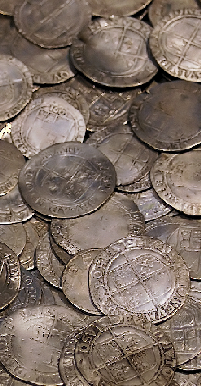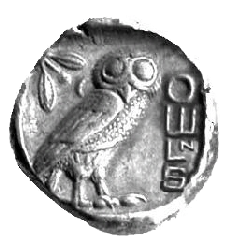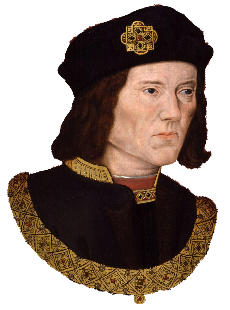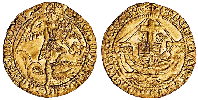
● Next Meeting Status:
Cancelled



● Host Society for the
BANS 2011 Congress
held in Southport


Collecting The Coins Of Richard III
The Last Plantagenet King of England
In the light of the recent discovery of Richard III’s remains in the ruins of the Grey Friars Chapel, under a car park, in Leicester there is now even more interest in the coins issued during his brief reign.
Richard was King of England for just two years, from 1483 until his death in the fighting at the Battle of Bosworth Field in 1485. He was the last king of the House of York, the last of the Plantagenet dynasty and his death is sometimes regarded as marking the end of the English Middle Ages.

Coins of famous early English monarchs have always been a popular collecting theme and in most cases have proved a really sound investment, the coins of Richard III being no exception. The coins issued during Richard’s brief reign really mark the end of England’s medieval silver coinage and although Henry Tudor’s early coins followed much the same style as Richard’s, with only the name changed, new lifelike images of the victor of Bosworth soon followed.
The new issues heralded the start of the English art renaissance.
Both gold and silver coins were struck bearing Richard’s name; the most traded and popular gold coin of the day being the angel, so named from its obverse image of St. Michael slaying a dragon. The coin was also convenient for the professional classes as its value was six shillings and eight pence – a third of a pound, which was the standard fee for professional services. Throughout the late Middle Ages silver coinage of all denominations tended to follow a standard stereotype; the current monarch’s stylised facing head on one side and a cross and pellets on the reverse. Medieval coins often seem crude in appearance when compared with modern issues, but this is because they were hand hammered onto roughly cut blanks and the weight and purity of the metal was paramount over production quality

Forming even a representative collection of Richard III coins is no easy feat as they have increased in value and scarcity quite dramatically over recent years.
Gold coins are the most expensive with the angel [Fig.1] and half angel being the only types issued and good examples seldom come on the market. When they do you can expect high if not record prices to be achieved. Silver coins on the other hand do regularly appear on dealers’ lists and in auctions, but again quality pieces command high prices.

Richard’s coins are all marked by use of his own personal badges or emblems at the start of the wording. His personal badge was the boar’s head and his family emblem for the House of York was the white rose. The two were sometimes shown as a half sun and half rose combined. These mintmarks can often be used to distinguish Richard’s coins when the name on the coin is indistinct or clipped away. Coins and dated documents are really the only artefacts available that can be attributed with accuracy to a specific year or time. With Richard’s reign lasting just over two years the production of coin was understandably rather limited.

Because of their scarcity, forming a collection as such of Richard III’s coins is
difficult and most people settle for acquiring a few representative examples in the
best condition they can afford. Condition and provenance are all-
This point is well illustrated by a gold Angel recently auctioned by Spink. It achieved
over twice its pre-
Even more modest coins of this reign have steadily climbed in value over the last
ten years to over three or four times their selling prices of a decade ago. World-
Alan M Dawson


Hover your cursor to
see the coins in detail
Fig.1
Ponterio Sale 176 August 2013
Lot 20045 sold for US$28,200

Fig.2
The silver groat is probably the most frequently encountered coin of Richard’s reign. This choice example, with boar’s head mintmark on both sides, was recently sold for £2,400 by Nigel Mills Coins of London. Actual size 26mm diameter. Halfgroats seldom appear on the market and are extremely rare.

This magnificent and rare gold angel was recently discovered near the site of the famous Battle of Bosworth in Leicestershire. It bears Richard III's personal emblem of the boar’s head.
Spink Coin Auction 4th December 2012, Lot 37. Hammer Price £36,000
Size approximately 25mm diameter.
The coin was sold to a private collector, with a pre-

Fig.3
Silver pennies minted in London are extremely rare, whereas those minted at York and Durham do turn up quite regularly. The asking price, depending on condition, tends to be between £400 and £800 for decent examples. The coin shown here is a penny issued by Bishop Sherwood at Durham and is a good example of the type. Actual size 15mm diameter.

Fig.4
The tiny silver halfpenny is seldom on a full flan and most of the wording is usually missing, yet even poorly struck specimens command a price in excess of £500. Actual size of the example shown 11.5mm diameter

The most commonly encountered coin of Richard III is the silver groat or four-
The half groat or two-
Groats were struck at both the Tower of London and at York, Richard’s family support base in the north. Small silver pennies were minted not only at the Tower but also by the Archbishop of York, Thomas Rotherham, and the Bishop of Durham, John Sherwood. Their respective issues are marked by the letter ‘T’ and a key either side of the king’s head for the York pieces, and the letter ‘S’ on the neck of the portrait for those struck in Durham. Such small silver coins are seldom found on full flans and the condition of the average specimen is pretty dreadful – yet they still command high prices due to popular demand for any coin of this famous monarch.
Unlike today’s coinage each denomination contained its face value in silver, so as the market price of metal increased the size of the smaller denominations decreased. Silver halfpennies [Fig.4] and even farthings were issued, the latter being less than eight millimetres in diameter and very thin. They are exceptionally rare being known only from two or three examples, making them virtually impossible to acquire.

Where to next?
